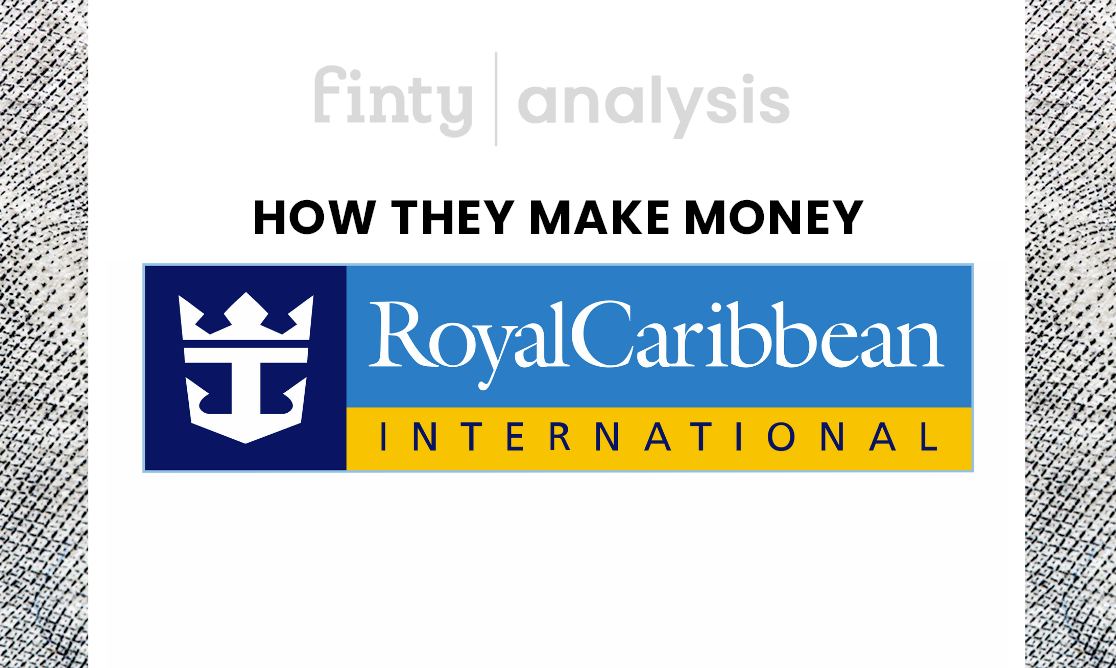- Royal Caribbean consists of three international cruise brands, Royal Caribbean International, Celebrity Cruises, and Silversea Cruises.
- The largest earners are its Asia/Pacific and North American divisions.
- Royal Caribbean makes money by selling cruises to global customers.
Norwegian shipping companies I.M. Skaugen & Company, Anders Wilhelmsen & Company, and Gotaas Larsen founded Royal Caribbean in 1968. The company was listed on the Nasdaq stock exchange in April 1993 under the ticker NYSE:RCL. The IPO issued 11.5 million shares at a share price of $9 on its launch.
Like all other cruise liners, Royal Caribbean saw massive losses during the Covid pandemic, operating at 42% capacity after being forced to suspend operations in March 2020.

Coming up next
What does Royal Caribbean do?
The Royal Caribbean Group is a leader in the cruise liner industry.
The company operates three international cruise brands, including Royal Caribbean International, Silversea Cruises, and Celebrity Cruises.
In 2021, the company sold its interest in the Azamara cruise brand.
Royal Caribbean also owns a 50% holding in a joint venture with TUI Cruises GmbH.
TUI Cruises operates the German cruise brands Hapag Lloyd Cruises and TUI Cruises.
Royal Caribbean manages a fleet of more than 60 cruise vessels, visiting more than 1,000 international destinations.
How does Royal Caribbean work?
Royal Caribbean International offers cruises through its online booking site and partner travel agents around the globe.
The company's sole source of revenue is its cruise liner business, where it caters to around 6.5-million passengers each year.
The company focuses on providing luxury cruises, celebrity cruises, and entertainment cruises for its customers—Royal Caribbean partners with the Pan American Development Foundation, Big Brothers Big Sisters, and United Way.
How Royal Caribbean makes money
Royal Caribbean makes money by offering cruises to a range of international markets. It operates three business divisions covering North America, Europe, the Asia/Pacific region, and other markets. Let's unpack the model in detail.
Royal Caribbean's cruise brands operate similar itineraries and revenue and cost models.
The three divisions have similar revenue components and economic characteristics, and they serve the same consumer demographic.
The company also earns money through vacation protection insurance, cancellation fees, tours, and port operating fees at port facilities.
North America
Royal Caribbean's North American business division caters to cruises around the US, Mexico, Canada, and the Caribbean.
This segment of its business accounts for approximately 22.8% of its total revenues. In 2021, Royal Caribbean reported this segment of its business accounts for its second-largest revenue stream.
Asia/Pacific
The Asia/Pacific region includes cruise destinations in Oceania, Southeast Asia, East Asia, and South Asia.
The company visits countries like Thailand, Singapore, China, the Philippines, India, Japan, Australia, and nearby countries in the region.
The Asia/Pacific itineraries account for the company's biggest revenue stream and around 37.9% of its quarterly revenues. This segment of its business also suffered the least during the pandemic.
Europe
Royal Caribbean's European business division was hardest hit by the pandemic. It's also the smallest revenue stream for the company, accounting for just 7.4% of its total annual revenues.
Some of the itineraries involved in this business division include cruises around Nordic countries, France, Germany, Spain, Italy, and the UK.
This division is the second-smallest by revenue. The company didn't report any earnings for Q2 2020, showing the impact of the pandemic on its business in this region.
Other Regions
Royal Caribbean's smallest business division, accounting for just 3.7% of its annual revenues. This segment of its operations involves itineraries for Latin American and South American countries.
Future growth engine
Royal Caribbean is in the process of recovering from the impact the pandemic caused on its business.
The company was back to 80% operations by the summer of 2021, and it continues its recovery as the world moves back to normal.
It is expected to take some time for its stock price to fully recover from the dip experienced in the 2020 market crash.
Future plans for growth center around increasing capacity and maximizing efficiency across the entire business by transforming the IT capabilities of its operations and improving the digital experience of guests from booking to boarding to cruising.
Competitors
Royal Caribbean competes with other cruise liner companies for market share. However, it suffered less than many of its other competitors.
An example is Carnival, which dealt with the "Diamond Princess" fiasco at the beginning of the Japan outbreak. Some of its closest competitors include the following companies.
- Carnival Corp (CCL).
- Norwegian Cruise Line Holdings Ltd (NCLH)

